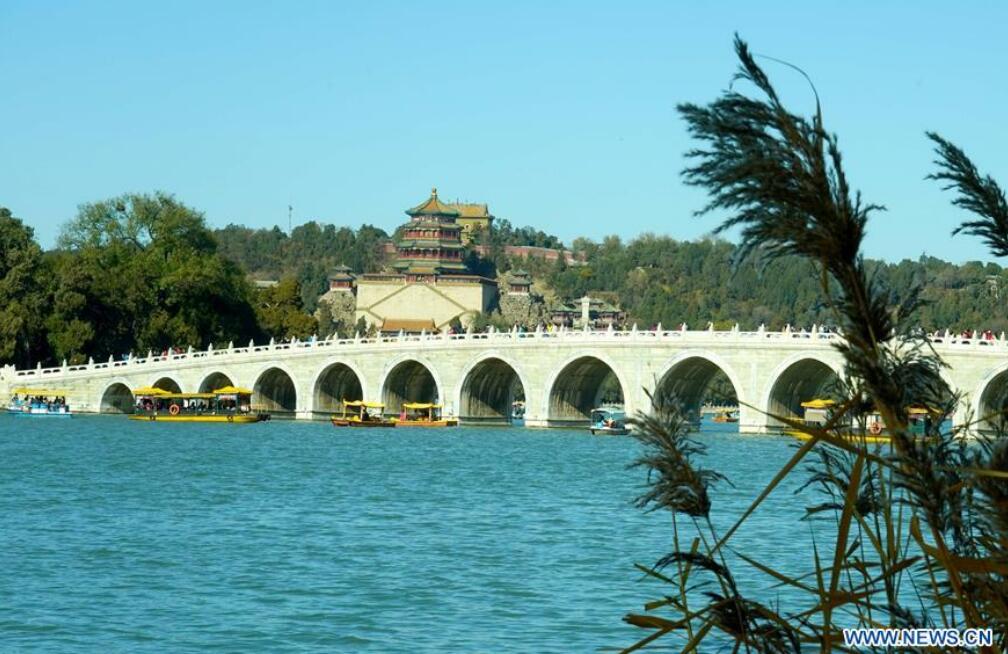Sistertours.com ! WeChat/WhatsApp: +8613811531028
The Summer Palace, Yiheyuan in Chinese, is the most celebrated imperial garden in China. The garden came into existence early in the 1750s and had once been a summer resort for the emperors. It is acclaimed as a museum of gardens in China, for a visit to this garden bestow on sightseers a glimpse of representative scenes all over China.

The Summer Palace (Yiheyuan), located in the northwestern outskirts of Beijing, is the largest and most famous imperial garden in China. The palace features hundreds of architecturally distinct buildings, halls, pavilions, pagodas, bridges and corridors dispersed among magnificent and elegant gardens. It has an area of 290 hectares (717 acres), three quarters of which is water. The palace has three unique areas: Court Area, Longevity Hill Area and Kunming Lake Area.
Beijing Summer Palace - Stone BoatThe garden was originally named the Garden of Clear Ripples (Qingyi). It was a summer resort for the emperors in the Qing Dynasty (1644-1911). In 1860, the garden was burnt down by the Anglo-French Allied Forces. In 1866, Empress Dowager Cixi rebuilt the garden using embezzled funds from the imperial navy and named it the Summer Palace (Yiheyuan). In 1900, during the Boxer Rebellion, the Eight-Power Allied Force ransacked the palace. After another reconstruction in 1903, the garden was restored to its original beauty and magnificence. As the grandest garden in China, it was added to the World Culture Heritage list in 1998.

Court area of Summer Palace in BeijingThe East Palace Gate (Donggongmen) opens into the Court Area. Inside is a group of typical courtyard houses connected by porches. The center building is the Hall of Benevolence and Longevity (Renshoudian) where Emperor Guangxu, the last emperor of the Qing Dynasty, held court and conducted official business during his stay at the garden. Now, an exquisitely carved screen, a bronze dragon and bronze phoenix are on display. To the northwest are three halls: the Hall of Jade Ripples (Yulantang) where Guangxu lived; the Hall of Virtue and Harmony (Deheyuan), the biggest theater in the Qing Dynasty; and the Hall of Joyful Longevity (Leshoutang), a splendid residence of Empress Dowager Cixi. To the northeast is the Garden of Harmony and Enchantment. This was where the emperors spent their leisure time fishing.